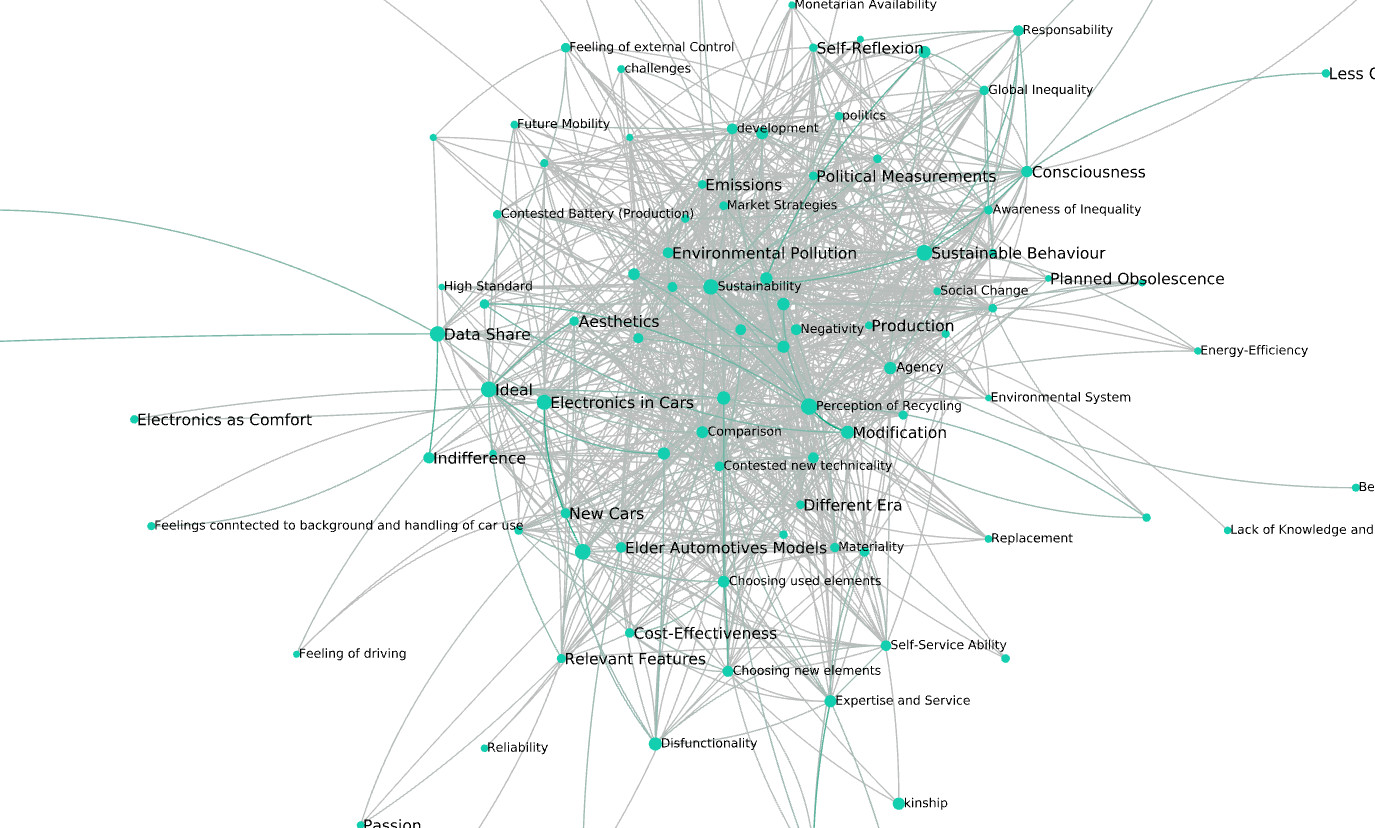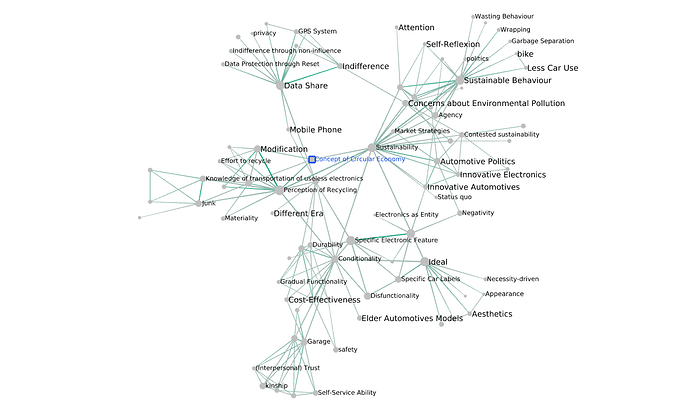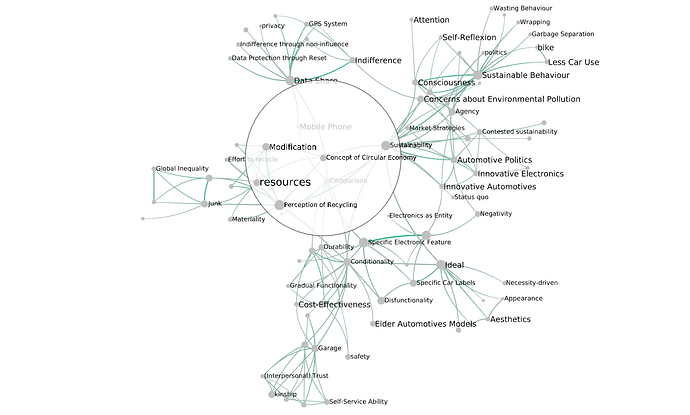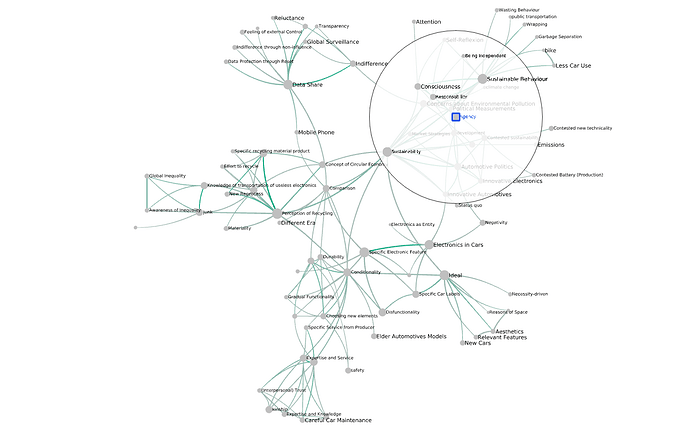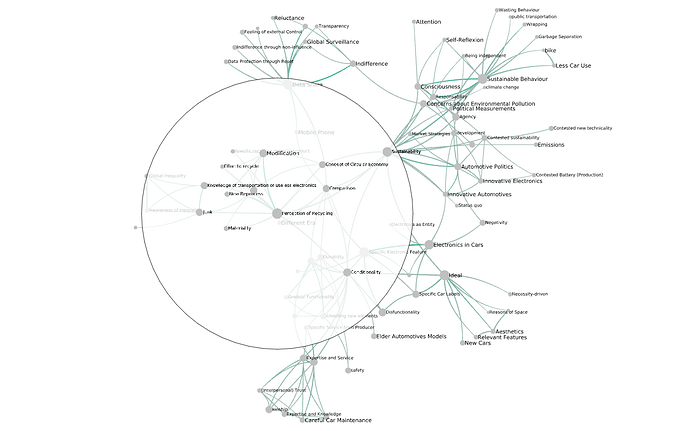At the time of writing, the TREASURE corpus consists of 3,149 posts in 71 topics, for a total of almost 100,000 words. Participants are 111. This corpus was enriched with 5,036 annotations, which use 285 codes. The 285 codes are connected by 11,468 co-occurrence edges, many of them parallel (which means that the same two codes co-occur multiple times). Unique co-occurrences are 3,999. The edge between perception of recycling and modification is both the deepest (d = 98) and the broadest (b = 54, really a large consensus!). The form of this graph is the usual for CCNs, though even more densely connected than most. We need network reduction to make sense of it.
Highest core value nodes
Thie highest-k K-core in this network consists of 71 codes who are connected to at least 28 others (k = 28).
codes in the highest-k core
Aesthetics
Agency
Attention
Automotive Politics
Awareness of Inequality
challenges
Choosing new elements
Choosing used elements
Comparison
Concept of Circular Economy
Concerns about Environmental Pollution
Conditionality
Consciousness
Contested Battery (Production)
Contested new technicality
Contested sustainability
Cost-Effectiveness
Data Share
development
Diesel Car
Different Era
Differentiation between electronic and combustion engine cars
Disfunctionality
Durability
Effort to recycle
Elder Automotives Models
Electronics in Cars
Emissions
Environmental Pollution
Environmental Preservation
Environmental System
Expertise and Knowledge
Expertise and Service
Feeling of external Control
Future Mobility
Global Inequality
Global Politics/Economics
Gradual Functionality
High Standard
Ideal
Indifference
Indifference through non-influence
Innovative Automotives
Innovative Electronics
Junk
Market Strategies
Materiality
Modification
Monetarian Availability
Necessity-driven
Negativity
New Cars
New Reprocess
Perception of Recycling
Planned Obsolescence
Political Measurements
politics
Practicability
Production
Relevant Features
Replacement
resources
Self-Reflexion
Self-Service Ability
Social Change
Specific Car Labels
Specific Electronic Feature
Status quo
Sustainability
Sustainable Behaviour
Wasting Behaviour
Association depth
This network reduces in a way that I have not encountered so far: the density goes down faster than the number of nodes as d increases. So, we get networks that are not so dense, but still have a lot of codes. Provisionally, I chose this one, with d >= 10. It has 97 codes and 191 edges. Bluer edges represent higher values of d.
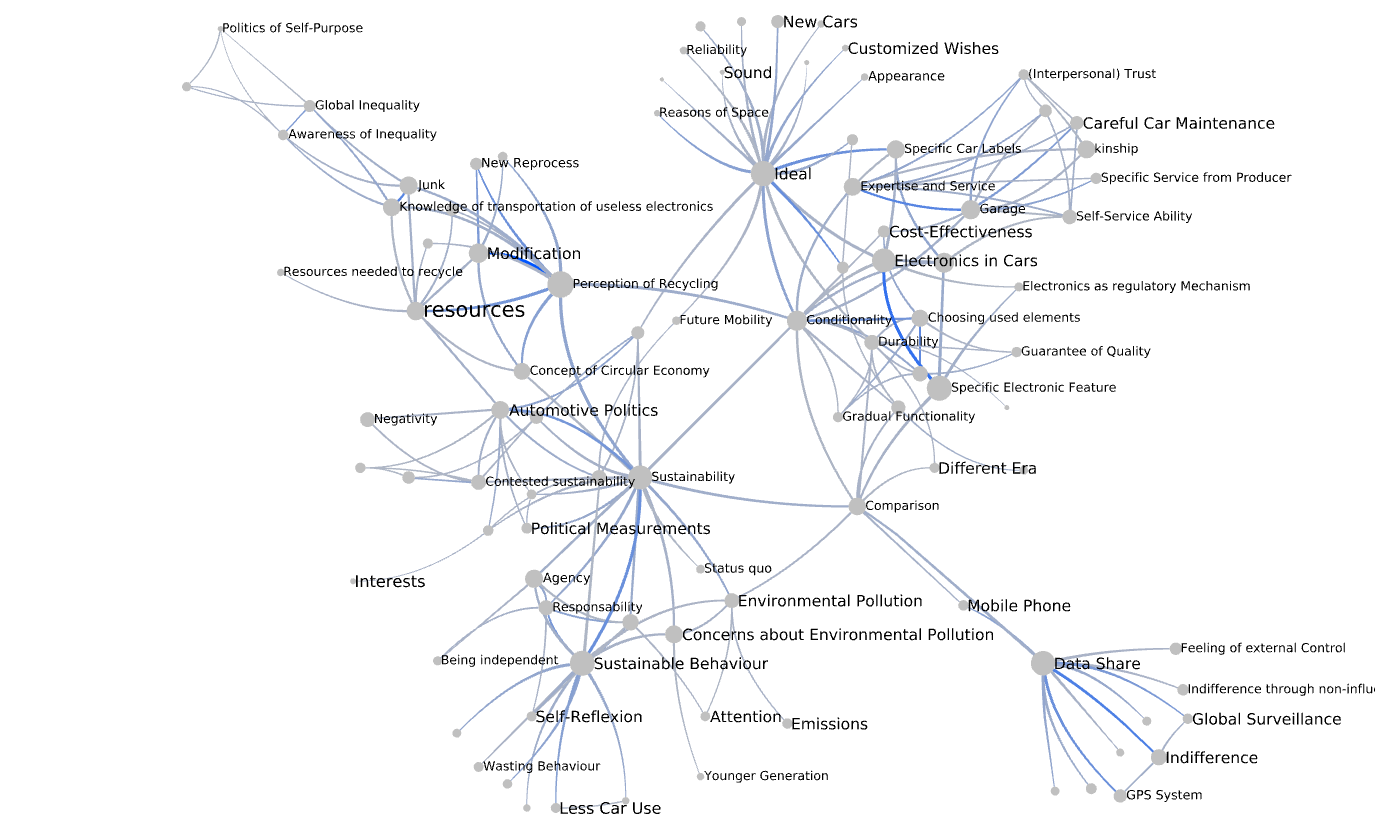
Association breadth
The reduction with association breadth seems to work better, and it encodes similar information, because the correlation between d and b is very high. This is a reduction with b >= 7. Greener edges mean higher values of b, so more informants endorsing the same association.
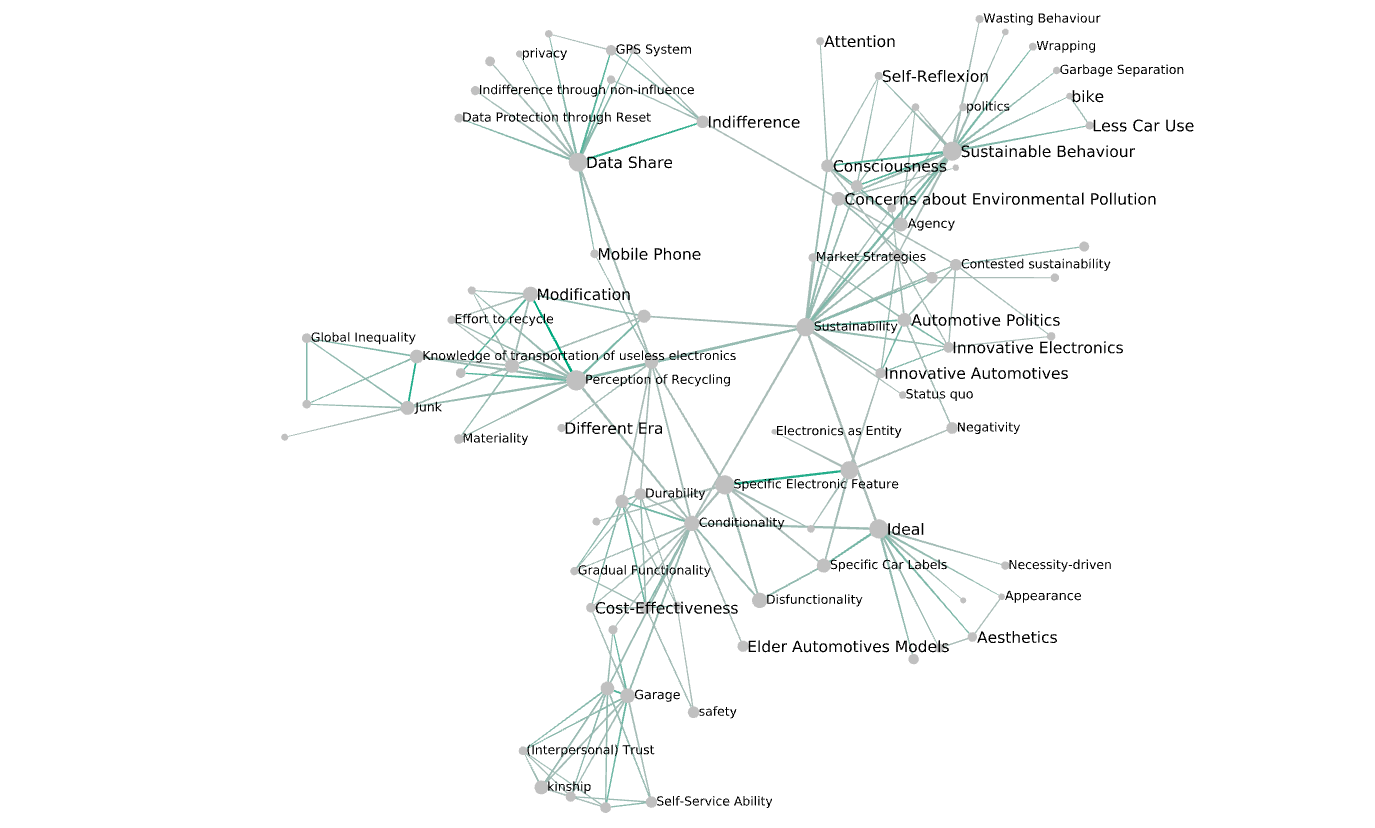
Simmelian backbone
Here I need a little more time, because my script has a glitch. I need to review it, and possibly ask a question to Bruno.
Other than that, happy to do more tweaking. Ping @Nica , @siri and @ivan.
